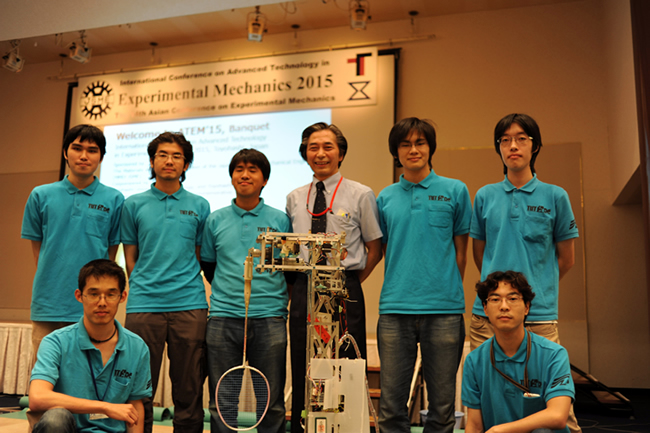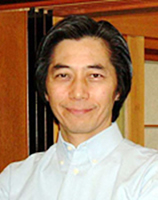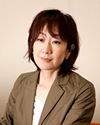
ここからコンテンツです。

Twenty Years of Progress with Robot Contests
Shinichi Suzuki

Toyohashi University of Technology can take pride in its achievement at being six times winners in the NHK Robot Contests for University Students, more than any other single institution. Professor Shinichi Suzuki has been providing advice on the competition to students over a long period of 20 years, as the advisor for the Robot Contest Club. Although they could not progress beyond the best 8 last time around, their almost fully automatic badminton robot drew much attention. Professor Suzuki does not want his students to simply come out victorious in these events but aims to raise their competence level, being mindful about the advancements achieved by robot technologies.
Interview and report by Madoka Tainaka
Victories started as soon as he became involved
The NHK Robot Contest began in 1988 for Technical College students, and the contest for university students started in 1992. Toyohashi University of Technology has participated in the contest from the very first event, and Professor Suzuki became involved as the advisor for the Robot Contest Club at Toyohashi University of Technology just two years later, in 1994. The fact that Professor Suzuki’s laboratory happened to be located next to the club activity room prompted a student club member to ask him for his participation. Professor Suzuki immediately pulled off the remarkable achievement of guiding the students to win the competition in his first year. Since then he has continued to serve in his post as advisor for over 20 years.
“The year before I joined, our club had the misfortune of having a robot that completely stopped functioning, right in front of the audience. The students were frustrated and really wanted to clinch the victory the following year. So I decided to advise them in a variety of areas, such as the direction of the project, completion of design, and so on,” said Professor Suzuki, looking back on those days.
A topic is set for the Robot Contest each year, and it was “Soccer Robot” for 1994. The project involved a one-on-one duel of robots created by two teams, which competed to score goals against each other. The type of robots used at the time still had an operator riding and manipulating them.
“We created a robot that was completely different from the one we had made the previous year, by means such as adopting larger tires to make it more maneuverable. We now have in excess of 40 members in our Robot Contest Club, but back then, there were only a handful of members, and it required absolute commitment from everyone to get things done. We ended up winning the following year in 1995 as well, and that got me hooked on the robot contest.” Professor Suzuki laughed a moment, before continuing with a wry smile.
“After being involved for about ten years, I thought perhaps I should resign, but we managed to come in first in 1998, 2002, 2008, and 2009. I guess I got greedy with success and before I realized it, I had been involved with this project for over 20 years.”
Is it technology or strategy? The answer is in the technology
The history of the Robot Contest can be traced back to the “King of the Mountain” a contest held at the Massachusetts Institute of Technology in 1988. It was a game that involved robots starting on either side of a mountain, which had been set up indoors. Whoever stacked the biggest load on top of the mountain won. The winner of the game, however, was a robot that only managed to bring one load to the top of the mountain and spent the rest of the time interfering with other robots, by utilizing its speed. Professor Suzuki noted, “This shocking outcome spread the appeal of robot contests both in terms of technology and strategy.”
In order to come out victorious in a robot contest, technology alone will not suffice. Creative and strategic thinking are also essential. A review of the participants in a competition for badminton robots in 2015 showcased an array of masterpieces conceived according to the ingenuity of the respective universities. These included one robot that held multiple rackets in its numerous hands and another given intensified agility by enhancing the maneuverability of the controller. The international version of the competition (ABU Asia-Pacific Robot Contest), which was held in November and pitted the winning teams from various university student robot contests against each other, even featured a robot entered by a Chinese team that recognized human emotions!
Against this backdrop, the badminton robot proposed by Toyohashi University of Technology on that occasion was made with such workmanship that the team considered it their crowning masterpiece. The robot’s movements were almost fully automated. The robot captured the image of a shuttle hit by the opponent with two units of high-speed cameras. It predicted and moved to the location of the shuttle drop position by solving equations comprised of Newtonian mechanics and fluid dynamics, then hit the shuttle back. While it was not capable of smashing the shuttle, it certainly had the accuracy to rally against a human opponent, and made for an enjoyably challenging opponent.
“The point in this instance was that the two robots had to operate in harmony, without obstructing the opponent. The movements of our robot were positively evaluated at the award ceremony. The robot was praised for the way it moved, as if it were dancing. I was quite thrilled about that,” said Professor Suzuki.
Although the robot did not progress beyond the best eight in the competition, due in part to bugs in the programming, it was nevertheless conferred the Design Award and Special Award. The badminton robot created by Toyohashi University of Technology was selected, together with the robot that won the contest, to be exhibited at the networking event of participants held after the contest. People crowded around our robot to catch a glimpse of it for themselves.
“I was consulted by the students at the very beginning, on whether or not to make the operation of the robot autonomous or manually controlled. I advised them that they should definitely aim for autonomous. The level of competition at these international contests has been increasing in recent years, and I felt that we should not only aim to win but also consider how we should win. I would like to see us competing with fully automatic and autonomous robots in the future. That, I believe, would raise the foundation of robot technology in Japan as a whole, and such is the responsibility vested in us as a prestigious institution that participates in robot contests. Even if we fail to win, the technology will remain with us for the next year. Strategy, on the other hand, is useful only until it is revealed. It is not like that with technology: even when your opponents find out how you did what you have done, it still is not that easy for them to replicate that technology.”
It is not only about craftsmanship, as theory is also essential
Professor Suzuki’s specialization is fracture mechanics. His work pertains to building theories, particularly regarding high-speed fracture phenomena. Unlike robots, this may appear to be a somewhat humble fundamental study, but it is an extremely important field that is concerned with guaranteeing the security of social infrastructure, such as bridges, tunnels, and huge airplanes.
"I believe it is extremely important to create technologies that are based on science. Students who participate in the robot contests often display an outstanding ability to create by observing and mimicking, and then using their own hands. As a matter of fact, they are often recruited by companies. You see, while many students coming out of universities these days have never done work such as soldering, the students who participate in the robot contests can be hired with peace of mind in this respect. There are, of course, those who find it difficult to back up their efforts with theoretical evidence. It is not possible to hope for any dramatic leaps in technology if one neglects theories. In the end, theory and application, as well as practical implementation, are all very important.”

In addition to hardware, the emphasis on development is about to shift to software, as is the case in the industry as a whole. Theory will be essential when this happens. Moreover, the robot context topic for next year is “Clean Energy Recharging the World.” It is a difficult topic that has to do with manipulating eco-robots, which are hybrid robots, under very limiting conditions. Professor Suzuki told us of his aspiration to use these robot contests to nurture students in areas that do not merely require them to work with their hands, but equally involve aspects such as academic elements and structural programming of software.
Reporter's Note
Professor Suzuki’s original specialization was aerodynamics in the field of aerospace engineering. He witnessed man’s first lunar landing by the Apollo Project on television when he was still in high school. This inspired his yearning for flight rockets.
“In order to make an aircraft fly, a number of academic fields other than aerodynamics are in fact required, such as structural theories and flight dynamics. Similarly, robotics can be considered an integrated engineering discipline that consolidates a variety of academic fields, such as mechanical engineering, electrical engineering, computer science, and the like. This may be the reason I was not uncomfortable with the prospect of becoming the advisor, even though the field is outside my specialization,” Professor Suzuki told me.
He said that he would like to write articles in the field of robotics, such as on collaborative work performed by robots, at some point in the future. His passion as the advisor for the Robot Contest Club is not declining; rather, Professor Suzuki appears to be heading toward new ground in his pursuit of further robot evolution.
ロボットコンテストと歩んできた20年
豊橋技術科学大学は、NHK大学ロボットコンテストにおいて、過去に全学最多となる6回の優勝を誇る名門である。そのロボコン出場ロボットを制作する部活動「ロボコン同好会」の顧問として、20年の長きにわたり学生に助言してきたのが、鈴木新一教授だ。2015年は惜しくもベスト8にとどまったが、ほぼ全自動のバドミントン・ロボットは大いに注目を集めた。鈴木教授は、ただ勝負に勝つだけでなく、ロボット技術の発展を見据えてさらなる高みを目指している。
就任直後から、優勝に貢献
1988年からスタートしたNHK高専ロボットコンテストに引き続き、大学ロボットコンテストが始まったのは92年のこと。初回から参加していた豊橋技科大のロボコン同好会の顧問として鈴木教授が就任したのは、2年後の94年である。たまたま鈴木教授の研究室が部室のすぐ側にあり、部員の学生に頼まれたのがきっかけだった。するとその年、いきなり優勝の快挙を成し遂げる。以来、20年余りにわたり顧問を続けてきた。
「じつは前年の93年、観客の前でロボットがまったく動かないというアクシデントに見舞われたんですね。学生たちが悔しがって、来年は絶対に優勝したいと。そこで、方向性や最後の仕上げなどで、いろいろとアドバイスをしたのです」と鈴木教授は当時を振り返る。
ロボコンでは毎年、テーマが設定されるが、94年はサッカー・ロボットだった。1対1で相手チームのゴールを狙うというもの。当時はまだ、本体の上に人が乗って操縦するタイプのロボットだった。
「タイヤを大きくして動きやすくするなど、前年とはまったく違うロボットをつくりあげました。現在でこそ、ロボコン同好会は40名を越える大所帯ですが、当時は中心メンバーが数名ほどで、全員必死でした。結局、翌95年も優勝し、私自身もロボコンから足を洗えなくなってしまった(笑)。10年くらい経った頃、そろそろ顧問を辞めようと思ったのですが、その後も98年、2002年、08年、09年と優勝を果たし、欲が出て、気がついたら20年も経っていたという感じです」と鈴木教授は笑う。
技術か戦略か、その答えは技術にあり
ロボコンの歴史は、1988年に開催されたマサチューセッツ工科大学の“King of the Mountain”に遡ると言われる。これは、室内につくられた山の両側から2台のロボットが山頂を目指し、『山頂に多くの荷物を積み上げた方が勝ち』というゲームである。ところが、勝ったのはたった一つの荷物しか山頂に運ばず、後はスピードを生かして、ひたすら相手ロボットの邪魔をするというロボットだった。
「この衝撃の結末は、ロボコンにおける技術と戦略の両面の面白さを知らしめることになりました」と鈴木教授。
確かに、ロボコンに勝つためには、技術力だけでなく、アイディアと戦略が不可欠である。実際に、2015年のバドミンドン・ロボットを見てみると、千手観音さながらラケットを何本も携えたロボットや、コントローラーの操作性を高めて動きを俊敏にしたロボットなど、各大学が知恵を絞った作品が並ぶ。大学ロボコンの優勝チームが参加できる11月の世界大会(ABUアジア・太平洋ロボットコンテスト)では、人の感情を認識するロボット(中国チーム)まで登場した。
そうした中、今回の豊橋技科大が提案したロボットは、鈴木教授が最高傑作と自負するほどの出来映えだった。ほぼ全自動で動き、相手が打ったシャトルを2台の高速度カメラで捉え、ロボットはシャトルの落下位置をニュートン力学と流体力学の方程式を解くことで予測し、移動して、打ち返す。スマッシュこそできないが、人を相手にラリーができる精度を誇り、見ていると思わず一緒にプレーしてみたくなる。「さらにポイントは、2台のロボットが、それぞれ相手の邪魔をしないように協調して動くことにあります。授賞式で、その動きがまるでダンスを踊っているようだと評されて、とても嬉しかったですね」
本番ではプログラミングのバグなどが原因でベスト8にとどまったが、デザイン賞と特別賞を受賞。大会終了後、出場者が集う交流会では、優勝ロボットと並んで、豊橋技科大のバドミントン・ロボットが展示作品として選ばれた。しかも、そのロボットを一目見ようと、まわりに人だかりができたという。
「じつは、最初に学生から自動にするか手動にするか、相談を受けたのです。でも、絶対に自動にすべきだと助言しました。近年、国際大会のレベルは非常に高くなってきていますし、ただ勝つだけではなく、勝ち方というのがあるだろうと。今後はやはり全自動の自律ロボットで勝負していきたい。それこそが、日本のロボット技術全体の底上げにもつながるし、ロボコンの名門としての責務だと感じています。そもそも、たとえ勝てなかったとしても技術は翌年に残りますが、戦略は負けてしまえばそれきりです。技術は手のうちがわかったとしても、そうそう真似できませんからね」
モノづくりだけでなく、理論も必要
鈴木教授自身の専門は材料の破壊である。とくに高速な破壊に関する理論構築を手掛ける。ロボットと違って、一見、地味な基礎研究に思えるが、橋やトンネル、ビルといった社会インフラの強度の保証に関わる、非常に重要な分野だ。
「やはりサイエンスをベースにして技術を生み出すことは非常に重要だと感じています。ロボコンの学生は実際に手を動かして、見よう見まねでモノをつくりあげていく能力には長けていますし、実際、企業からの就職の引き合いも多い。最近は、はんだ付けすらしたことがない学生が多い中、ロボコンの学生なら安心して現場に出せるというわけです。一方、理論的な裏付けをするのは苦手な人がいるのも事実。しかし、理論をおざなりにして、技術の飛躍的な発展は望めません。やはり、理論と応用・実践はどちらも大切なんですね」
現在、産業界全体がそうであるように、ハードに加え、ソフト開発に軸足が移りつつある。その際にも、理論は不可欠だろう。ましてや、来年のテーマは「Clean Energy Recharging the World」。限られた条件の中でエコロボットをハイブリッドロボットによって動かすという難解な課題だ。これからは、学問的要素やソフトの構造的なプログラミングなど、単に手を動かすだけはない領域についても、ロボコンを通して養っていきたいと、鈴木教授は抱負を語った。
取材・文=田井中麻都佳
取材後記
鈴木教授のもともとの専門は、宇宙航空分野の空気力学である。高校生のとき、アボロ計画で人類が初めて月面に着陸したのをテレビで見て、飛行ロケットに憧れた。
「飛行機を飛ばすには、空気力学のほか、構造理論や飛行力学など、いくつもの学問分野が必要です。そういう意味では、ロボットも機械工学、電気工学、コンピュータサイエンスなど、さまざまな学問分野が統合された総合工学と言えます。だから最初、顧問になる際に、専門外でもさほど違和感がなかったのかもしれませんね」と鈴木教授。
いずれは、ロボット同士の協調作業など、ロボット分野の論文も書いてみたいという。ロボコン同好会の顧問としての情熱は衰えるどころか、さらなる進化を目指して、新たな境地へと向かおうとしている。
Researcher Profile

Dr. Shinichi Suzuki studied aerospace engineering until Masters level at Tokai University, and received his PhD. degree in 1980 from the University of Tokyo. He was also a visiting researcher at the Graduate Aeronautical Laboratory at CALTEC supported by MEXT (Ministry of Education, Culture, Sports, Science and Technology) from 1998 to 1999. Currently, Dr. Suzuki is a professor in the Institute of Liberal Arts and Science and the Department of Mechanical Engineering at Toyohashi University of Technology. His research interests are Aeronautics and Astronautics, High-Speed Mechanics and Optical Measurement.
Reporter Profile

Madoka Tainaka is a freelance editor, writer and interpreter. She graduated in Law from Chuo University, Japan. She served as a chief editor of “Nature Interface” magazine, a committee for the promotion of Information and Science Technology at MEXT (Ministry of Education, Culture, Sports, Science and Technology).
ここでコンテンツ終わりです。
